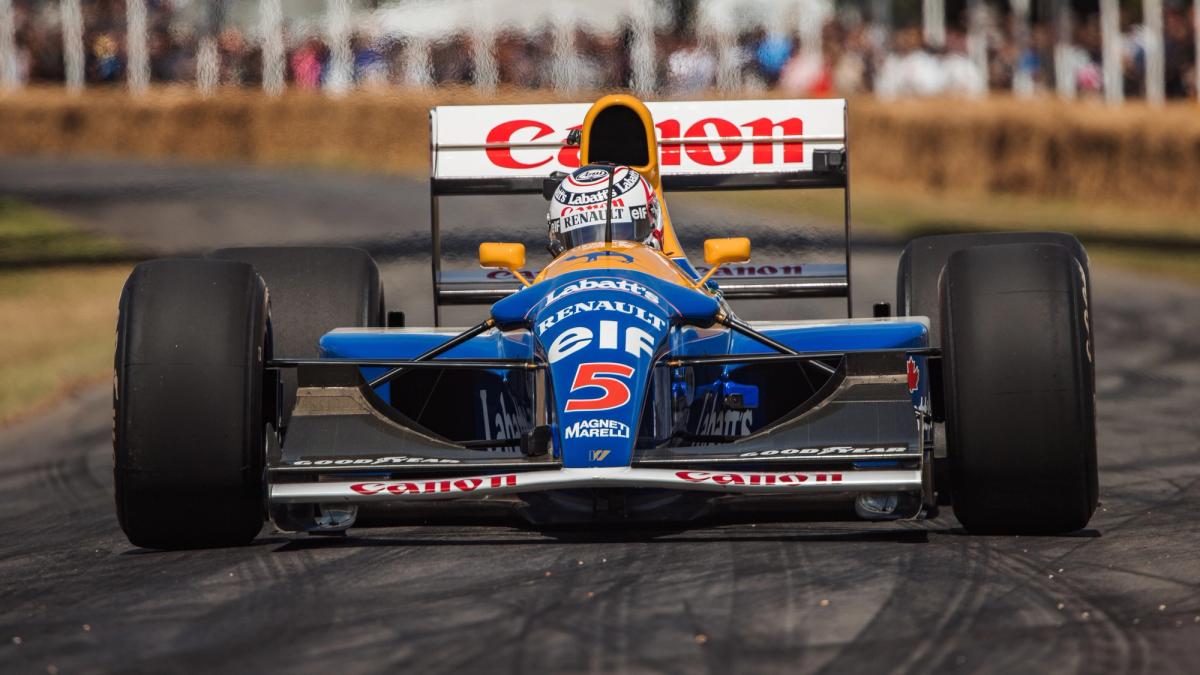Nigel Mansell's 1992 World Championship-winning FW14B will forever be one of Formula One's most iconic cars.
For all the rule changes, digital advancements, and aerodynamic tricks F1's constructors have developed in the intervening decades, Williams Racing's FW14B is still considered one of the most advanced technological machines to have ever raced in the sport.
A powerful and, crucially, reliable 3.5-litre V10 Renault engine powered a chassis filled with cutting-edge technology such as active suspension, traction control, and a semi-automatic transmission system. With Patrick Head and Adrian Newey's design, Williams boasted an entry far superior to those our rivals could muster.
Mansell Mania: In conversation with Nigel
The car was responsible for ten race victories in the 1992 season, with nine coming at the hands of Nigel Mansell. Teammate Riccardo Patrese won the Portuguese Grand Prix, but there was no denying that the Mansell-FW14B pairing was the more potent combination.
The legendary blue livery, with its white and yellow accents, had one further colour addition exclusive to Nigel's car, too. Nigel's number five on the nose cone was painted red, unlike its sister, which had the number six in white.
In all of the British driver's full years with Williams Racing, he raced with the number five on his car, birthing the nickname 'Red 5'. Although Red 5 came close to taking the World Driver's Championship several times in the '80s, the FW14B was the car that took Nigel to the top.
We first put the FW14 – the original spec – to race on track in the 1991 season. After a fraught year alongside Alain Prost at Ferrari in 1990, Nigel had planned to retire altogether, and it took two phone calls and a few weeks for him to change his mind and return to the Williams family after leaving in 1988.
The FW14 brought mild success, including a grand slam at the newly-reprofiled Silverstone for the British Grand Prix. Mansell Mania had gripped the nation, and a jubilant crowd watched as Nigel took pole position, the fastest lap and a race win. It was this race where the famous scenes of Ayrton Senna hitching a lift back to the paddock on Nigel's FW14 happened after the Brazilian ran out of fuel on the final lap.
Nigel's fondest memories of the car would come with its 1992 iteration – the FW14B. Packed with innovative advancements - most notably the active suspension - Nigel quickly found how to extract the most from his new weekend toy and began clocking up pole positions and race wins early in the season.
Nigel and Riccardo's advantage over their competitors often saw our Williams pair qualify a second ahead of their closest challenger in P3, and sometimes with Red 5 a further second faster than Riccardo. As a result, the duo would end four of the opening five rounds with 1-2 finishes for the Williams team.
The Monaco Grand Prix would become the first time in the season when Nigel didn't take to the top step. Still, he was on race-winner Senna's tail throughout the dying laps after emerging from a pit stop behind the McLaren driver. The two finished 0.2s apart after a thrilling conclusion at the Monte Carlo track that was as tough to pass on back then as it is today.
After crashing out when fighting Senna for the lead at Canada, Mansell fought back with a further three pole positions and three race wins in France, Germany and, of course, Great Britain. The FW14B had helped the British public believe they would see their first British F1 champion in 16 years and flocked to Northamptonshire to cheer Nigel on.
Nigel sets off at Goodwood
Together, Nigel and the FW14B were simply untouchable at Silverstone. Like one year earlier, the Midlands-born racer led every lap from pole position, took the fastest lap and won the race convincingly. The fans invaded the track after the race to celebrate what would be Nigel's final British Grand Prix.
Leaving Silverstone, the FW14B had helped Nigel to a 36-point lead in the championship over Riccardo, who sat in second place with 40 points, and the crown inched ever closer. The performance of the car was so high that we even scrapped our plans to introduce the FW15 that our engineers had initially developed for 1992.
Nigel took the championship in Hungary at Round 11 of 16 with five races to spare. Again, he had Senna alongside him on the podium and shared a touching moment with his long-time adversary. The pair celebrated as title winners for the first time, with Nigel finally understanding that rare feeling of being a Formula One World Champion.
Nigel and his FW14B would go on to win again in Spain that year to become the first driver to win nine races in a single F1 championship season. At the time, he was also the most successful British driver by race wins until Lewis Hamilton later broke this record.
The FW14B unleashed Nigel, who left F1 to become IndyCar champion in 1993 with, you guessed it, the number five car.
Still, when remembering Red 5, most race fans think of Nigel Mansell and the 1992 Williams FW14B. Just ask four-time World Champion Sebastian Vettel, who bought the car in 2020 and will run it at this weekend’s British Grand Prix.
Related Tags:
Powered By
© the Williams Group, under licence to Williams IP Holdings LLC
Williams Grand Prix Engineering Limited is a company registered in England and Wales under company number 1297497.
Its registered office is at Grove, Wantage, Oxfordshire, OX12 0DQ
Powered By





